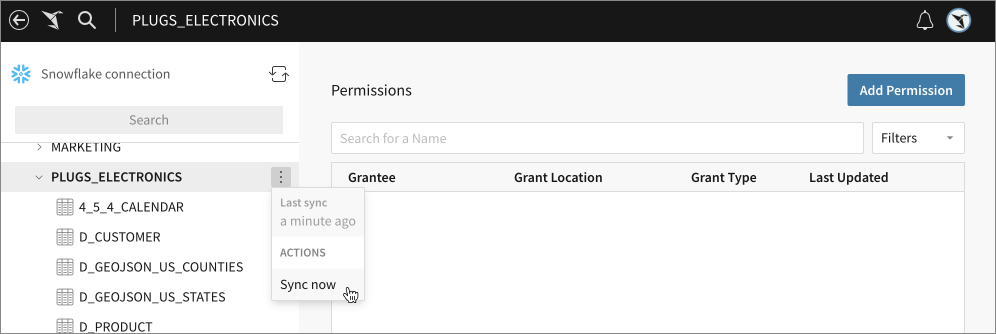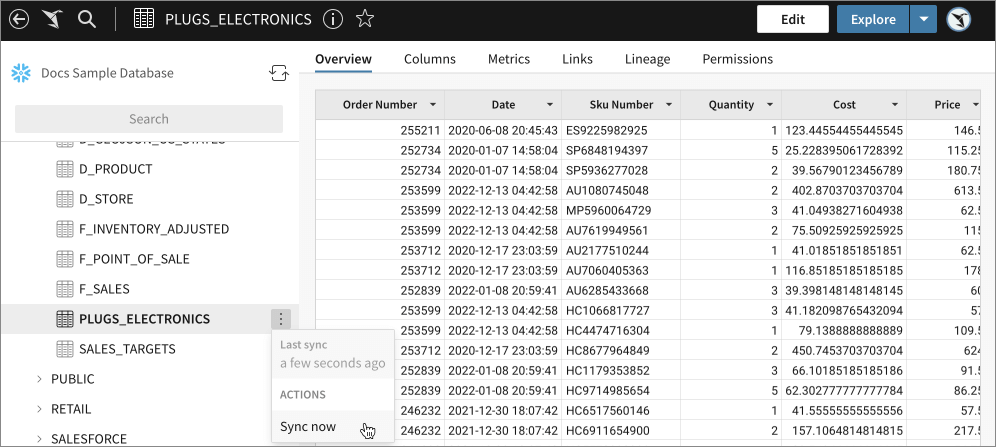Troubleshoot your connection
If you need to troubleshoot issues with your connection, such as missing tables or an inability to connect, follow the guidance on this page.
Add Sigma IPs to the allowlist
In some cases, you might need to add Sigma's IP addresses to the allowlist to successfully connect to your data. This is a necessary step when your warehouse is closed to external connections due to firewalls, security groups, or other IP-based security policies.
Sigma lists its egress IP addresses on all individual Connection page. To see them, follow these steps:
- Open the Administration > Connections page.
- Select the relevant connection.
If you don't have a connection to the data source, click Create Connection. - In the Connection Credentials section, see the IPs listed under the Host field.
The IP addresses listed on the connections summary are not applicable to connections over Private Link. If you need the IP addresses for a Private Link connection, contact Sigma Support.
For more guidance specific to individual data platforms:
- PostgreSQL: Sigma must be authenticated either at the Network level, or through
Client Authentication. - Redshift: See Amazon Redshift cluster security groups.
- Snowflake: See Network Policies.
Permissions for the Snowflake user role
Sigma uses the Snowflake user role specified on the connection. Unless you have the correct privileges granted to the role in Snowflake, you cannot see the data in Sigma.
If the connection uses OAuth, the connection inherits the permissions for each member of the organization directly from Snowflake. To troubleshoot permissions for an individual user or a service account user, confirm the following:
- The primary role granted to the user provides the relevant access in Snowflake.
- The user inherits the intended role through your OAuth provider.
Sync your data
Sigma automatically (and periodically) syncs your connection's metadata.
When you make changes in your cloud data warehouse, such as updating the schema for a table, you must perform a manual sync so these changes are reflected in Sigma. Syncs can be performed at the connection, database, schema, or table level. Because syncing only occurs at the level selected, to see your changes appear, you must perform a manual sync at all four of these levels.
You can perform a manual sync using the UI, or programmatically. For guidance on performing a manual sync using the Sigma REST API, see Sync a connection by path.
To perform the manual sync in the UI, follow these steps:
-
Navigate to Administration > Connections.
-
Select the relevant connection from the list.
-
Click Browse connection.
-
To sync the connection, which discovers updates to the databases available on that connection, click Sync connection metadata (
) for the connection.

-
To sync an individual database or schema, expand the connection, find the container, and click
More next to the name of the database or schema. Alternatively, you can find the database or schema by name by searching for it.
From the drop-down menu, select Sync now.

-
To sync an individual table, expand the connection, find the database that contains the table, expand that database, find the table, and then click
More next to the name of the table. Alternatively, you can find the table by name by searching for it.
From the drop-down menu, select Sync now.

Updated about 2 months ago
